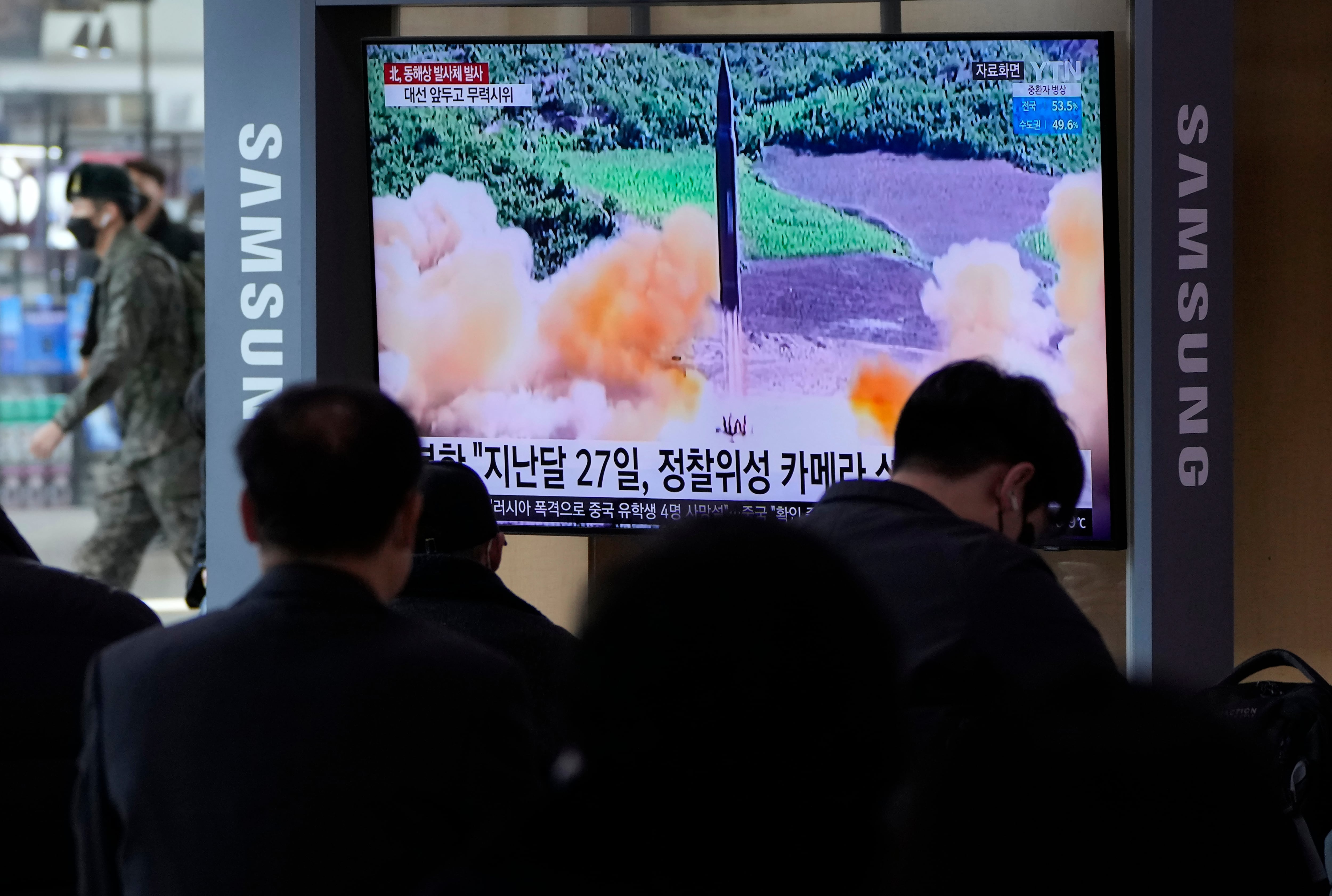SEOUL, South Korea — North Korea’a leader examined a finished military spy satellite, which his country is expected to launch soon, during a visit to an aerospace facility where he described space-based reconnaissance as crucial for countering the U.S. and South Korea.
Kim Jong Un during Tuesday’s visit approved an unspecified “future action plan” in preparations for launching the satellite, North Korea’s official Korean Central News Agency said Wednesday. North Korea hasn’t disclosed a target date for the launch, which some analysts say may be in the next few weeks.
That launch would use long-range missile technology banned by past U.N. Security Council resolutions, although previous missile and rockets tests have demonstrated North Korea’s ability to deliver a satellite into space.
There are more questions, however, about the satellite’s capability. Some South Korean analysts say the satellite shown in North Korean state media photos appears too small and crudely designed to support high-resolution imagery. Photos that North Korean media released from past missile launches were low resolution.
Photos released by the Rodong Sinmun newspaper of Tuesday’s visit showed Kim and his daughter — dressed in white lab coats — talking with scientists near an object that looked like the main component of a satellite. The newspaper did not identify the object, which was surrounded by a perimeter of red tape.
KCNA said the satellite was deemed ready to be loaded onto a rocket after scientists examined the device’s assembly and put it through tests to confirm whether it would withstand the environment of space.
South Korea’s Foreign Affairs Ministry said North Korea has yet to inform international maritime and telecommunication authorities of any launch plans. It said a North Korean satellite launch would violate various U.N. Security Council resolutions banning the North from any launches involving ballistic technologies and “threaten regional peace and stability.”
“The announcing of the satellite launch plan shows yet again that the North Korean regime is preoccupied with continuing its illegal provocations while ignoring the plight of its people,” the ministry said in a statement, in referring to North Korea’s broken economy and deepening international isolation.
The visit was Kim’s first public appearance in about a month, following a previous visit to the aerospace center on April 18 as state media announced that the satellite had been built.
Kim said acquiring a spy satellite would be crucial for his efforts to bolster the country’s defense as “U.S. imperialists and [South] Korean puppet villains escalate their confrontational moves” against the North, KCNA said.
He was apparently referring to the expansion of joint military exercises between the United States and South Korea, and the allies’ discussions on strengthening their nuclear deterrence strategies to cope with threats from North Korea, which has test-fired about 100 missiles since the start of 2022.
The next step in North Korea’s launch preparations, or the “future action plan” state media mentioned, could be installing the satellite on what would likely be a three-stage space rocket, said Kim Dong-yub, a professor at Seoul’s University of North Korean Studies.
Depending on how North Korean preparations go, the launch could be conducted as early as mid-June, although Pyongyang might also time the event to major state anniversaries that fall in July, September or October, the professor said.
Recent commercial satellite images indicate rapid construction activities at North Korea’s northwest rocket launch facility, where the country last conducted a satellite launch in 2016, the North Korea-focused 38 North website said Monday. The activities include construction on the facility’s main satellite launch pad and possible efforts to establish a new launch pad at the edge of the site near the sea, 38 North said in its report.
Spy satellites are among a slew of advanced weapons systems Kim Jong Un has vowed to develop. Others on his wish list include solid-fuel intercontinental ballistic missiles, nuclear-powered submariners, hypersonic missiles and multiwarhead missiles.
RELATED

North Korea has tested some of those weapons in recent months, including its first flight-test of a solid-fuel ICBM last month, but experts say the North may need more time and technological breakthroughs to make those systems functional.
In response to North Korean plans to launch a military spy satellite, Japan’s military last month ordered troops to activate missile interceptors and get ready to shoot down fragments from the satellite that may fall on Japanese territory.
North Korea placed its first and second Earth observation satellites into orbit in 2012 and 2016, but foreign experts say neither transmitted imagery back to North Korea. The U.N. Security Council issued sanctions over those launches.
North Korea has avoided new Security Council sanctions for its recent ballistic tests in 2022 and this year as Moscow and Beijing continue to block U.S.-led efforts to dial up pressure on Pyongyang, underscoring a divide between the council’s permanent members that deepened over Russia’s war on Ukraine.







